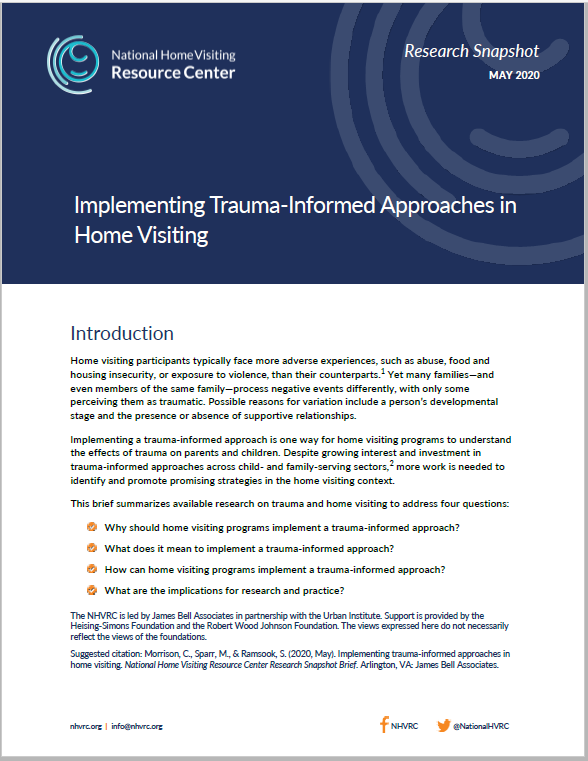
 Home visiting participants typically face more adverse experiences than their counterparts. Yet many families—and even members of the same family—process negative events differently, with only some perceiving them as traumatic. Children who don’t have a trusted adult to help them regulate their emotional response, for example, may experience toxic stress and biological reactions that can lead to negative outcomes.*
Home visiting participants typically face more adverse experiences than their counterparts. Yet many families—and even members of the same family—process negative events differently, with only some perceiving them as traumatic. Children who don’t have a trusted adult to help them regulate their emotional response, for example, may experience toxic stress and biological reactions that can lead to negative outcomes.*
Implementing a trauma-informed approach is one way for home visiting programs to understand the effects of trauma on parents and children. More work is needed to identify and promote promising strategies in the home visiting context.
This Research Snapshot brief summarizes available research on trauma and home visiting to address four questions:
- Why should home visiting programs implement a trauma-informed approach?
- What does it mean to implement a trauma-informed approach?
- How can home visiting programs implement a trauma-informed approach?
- What are the implications for research and practice?
Suggested citation: Morrison, C., Sparr, M., & Ramsook, S. (2020, May). Implementing trauma-informed approaches in home visiting. National Home Visiting Resource Center Research Snapshot Brief. Arlington, VA: James Bell Associates.
*See the full brief for references.